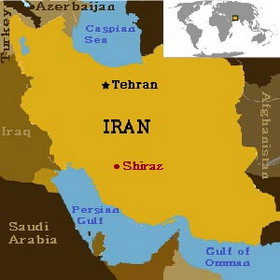Brit-Am Now no. 1444
The Lost Ten Tribes of Israel Movement
14 January 2010, 28 Tevet 5770
Contents:
1. Question Concerning What Languages the Scythians and Cimmerians Spoke
2. Alistair Williams:
Coat of Many Colors both a blessing and a curse!
3. Jew from Iran has Tradition of Descent from Ephraim
|
Brit-Am Discussion Group |
Contents by Subject |
Research Recognition Reconciliation Contribute |
|
Site Map Contents in Alphabetical Order |
This Site |
1. Question Concerning What Languages the Scythians and Cimmerians Spoke
Richard Johnson wrote:
Re Brit-Am Now no. 1442
http://britam.org/now2/1442Now.html#Answers
# 2. Answers to Historical Criticism of Brit-Am: Cimmerians and Scythians
Yair,
In the message below, the Brit-Am critics state that the language of the Cimmerians and Scythians was "Asian". What was the language of the Cimmerians and Scythians? I thought I read in one of your books that their language was possibly Aramaic or another language similar to Northern Hebrew. Thank you for your time and everything you do for us. We love you and God bless.
Richard Johnson Jr
Brit-Am Reply:
The language of the Cimmerians and Scythians is unknown.
Based on names and a few words that have come down to us it is often assumed that the Scythians spoke an Iranian-Persian type dialect
and the Cimmerians either something similar or a dialect of the Thracians in southeast Europe.
No-one knows for sure.
The Cambridge Ancient History points out the names may have been influenced by the intermediaries through which they became available
i.e. those from near the Iranians sound Iranian and those from the neighborhood of Thracians sound Thracian.
Some of the names of the Scythians and of Scythian groups have meanings in Hebrew as shown in our work "The Tribes".
Steven Collins also gives some examples.
The Scythians are identified with the Sakae. One of the centers of the Sakae was the region east of the Caspian Sea.
From this area Russian archaeologists have discovered inscriptions in Aramaic.
This is the strongest proof we have.
Aramaic was one of the official languages of the Assyrian Empire.
Aramaic was probably spoken by a portion of the Israelite Tribes even before their Exile.
A long inscription (The Bilaam Text) in a mixed Hebrew-Aramaic dialect dating from the Israelite period has been found in the region of Gad east of the Jordan.
This has been described and analyzed in our book "Ephraim"
2. Alistair Williams:
Coat of Many Colors both a blessing and a curse!
Re: Brit-Am Now no. 1437
Hi
I am relatively new to this but have been reading with interest your commentary on Josephs coat of many colours.
After some prayer and contemplation regarding the significance of his coat being of many colours I believe there is much significance in it today..
I fully accept that Joseph today consists of America and Britain through Manasseh and Ephraim.
These two nations have enjoyed the 'blessing' all of the material wealth and technology the world has to offer. One wouldn't regard these many varied 'riches' as righteous, quite the opposite, because all are material in origin, they are 'coloured'.
Josephs coat was both blessing and a curse. Josephs descendants biggest error was that they did not look to Almighty God for guidance and wisdom in handling the many blessings they inherited through the clothing of the coat of many colours.
I do believe in the significance of the spiritual aspect of this story and understand that we are today reaping the reward for the misuse of our inheritance.
Regards
Ali
3. Jew from Iran has Tradition of Descent from Ephraim
Eliyahu wrote:
Shalom Sir,
I am an Iranian jewish man, My ancestors were forced to convert to Islam around 150 years ago but I'm trying to revive my jewish heritage and refind my Jewish identity. I came originally from Shiraz, capital of ancient Persia. I would like to know which Israelite tribe I may belong to?


